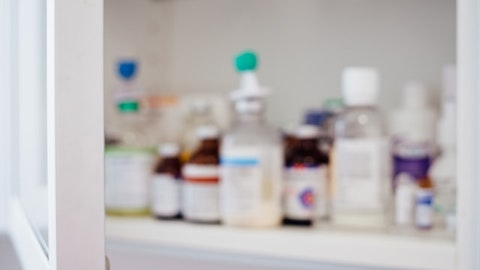So that’s an advantage, in particular, this type of compact antibody. And also related to that is tumor penetration, tissue penetration and potential for getting the cross blood-brain barrier to deliver therapeutic molecules across that. For imaging, quite useful, the fast clearance rate. So if you don’t have an Fc or you haven’t done anything to extend the half-life, these molecules are cleared very quickly out of the serum. So for imaging applications, that’s really important because molecules, which are bound to the target can combine very quickly. But then everything else that’s not bound, it’s cleared quickly, creates a very high contrast. So we make some very ideal molecules for that kind of situation. So overall, there’s a lot of broad therapeutic applications for single-domain antibodies in medicine, and it’s growing.
So let’s talk about how, as of today, the single dividend antibodies have been made. What’s the process or at least maybe the ones that are in the clinic now or approved drugs, how were they made? And again, the single-domain antibodies come from llama, so you need to immunize a llama. And when you immunize llama, you get llama antibodies. That’s fine, but more ideally for therapeutic use in humans, you’d like to have a human-based framework. And so a lot of the molecules that are in the clinic now have been originally from llama immunization, but they’ve been humanized. And what humanized really means is, you take the frameworks within the regions. There’s framework regions and there’s CDR regions. CDR regions are the variable sequences, which determine the specificity of the antibody for the target.
You can’t generally change those too much without altering the binding. So those usually stay, but the framework itself is an important thing that you can change the human. However, if you just simply change the llama frameworks to human, that particular molecule is not that stable and not that developable in a way because it’s not really evolved, human genes, the framework have not evolved to be expressed on their own. They’re always paired with VLs. And so that requires you need to sort of introduce some of these llama sequences back into the human frameworks. You got to reengineer those back in, in order to have a good developable molecule. So all of this is just a lot of engineering, a lot of process and after that initial discovery of the antibody.
And this is where OmnidAb can really streamline the entire process. So OmnidAb is a transgenic chicken that starts with a human framework, but not a 100% human framework because we’ve introduced stabilizing mutations, into certain regions that are important that are known to support solubility and stability as a single domain antibody. And in this slide here, it’s rather busy, but what we have on top line is actual fully human sequence. And then just below that, where you see the purple arrow, you can see the positions where we’ve put the stabilizing mutations in. And then below that, are all the clinical molecules, including some that are FDA approved. And what you can see collectively is those positions where we’ve introduced our stabilized mutations are consistent with how these clinical molecules have actually turned out, how they’ve been engineered after all this effort to come at those sequences.
And of course, the CDRs are highly variable because they’re all different targets. They are different antibodies. But the point is that the basic scaffold that you want to have in the end, that’s engineered already into the chicken. So that means that when you immunize OmnidAb chickens, you’ll come out with a panel of antibodies that will already have these engineered attributes to them. So this allows you to get much closer to your final molecule directly from the animal, which basically saves time and decreased risk of things going wrong during the engineering process. So that’s one key benefit. It’s pre-engineered aspect of the transgene, it’s a key benefit of OmnidAb. But also, as Todd mentioned, this is in a chicken, right? So that’s a different animal, too.
And one way to understand the advantage here is basically, all mammals genetically are more related or closer to each other than they are to birds, let’s say. So if you’re talking about raising the antibodies, you’re you really — any animal who is responding to a foreign antigen, the degree of forms, the degree of difference is important. And so within the realm of mammals, there are differences. You can make antibodies in a mouse to a human to various species. You can get antibodies out. But they don’t tend to be recognized as foreign within that group of mammals as if you were to immunize any of those proteins into a bird. Another way to think about this if you indulge me in a metaphor here, let’s say your target of interest is a green apple.


